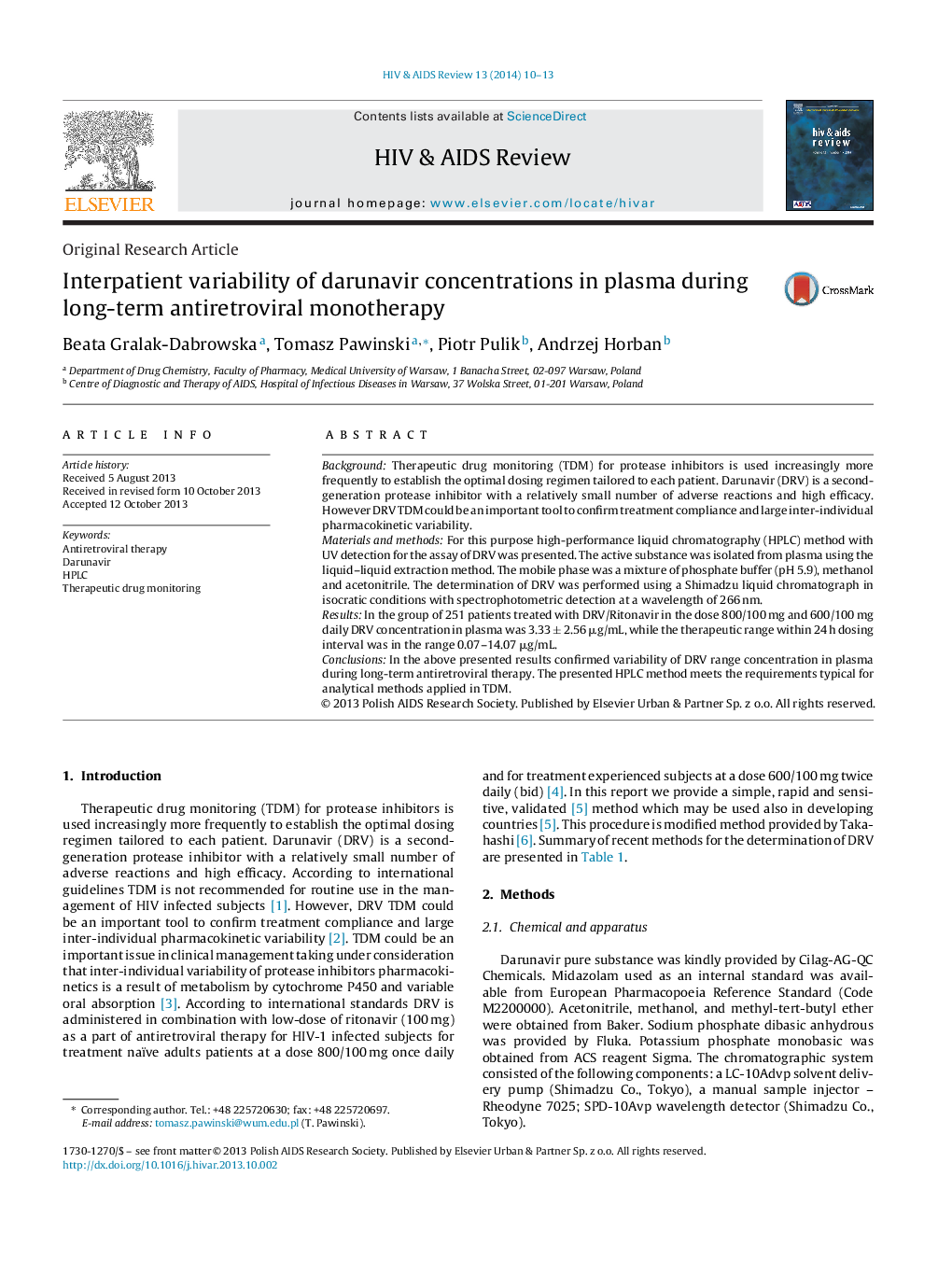| Article ID | Journal | Published Year | Pages | File Type |
|---|---|---|---|---|
| 3332359 | HIV & AIDS Review | 2014 | 4 Pages |
BackgroundTherapeutic drug monitoring (TDM) for protease inhibitors is used increasingly more frequently to establish the optimal dosing regimen tailored to each patient. Darunavir (DRV) is a second-generation protease inhibitor with a relatively small number of adverse reactions and high efficacy. However DRV TDM could be an important tool to confirm treatment compliance and large inter-individual pharmacokinetic variability.Materials and methodsFor this purpose high-performance liquid chromatography (HPLC) method with UV detection for the assay of DRV was presented. The active substance was isolated from plasma using the liquid–liquid extraction method. The mobile phase was a mixture of phosphate buffer (pH 5.9), methanol and acetonitrile. The determination of DRV was performed using a Shimadzu liquid chromatograph in isocratic conditions with spectrophotometric detection at a wavelength of 266 nm.ResultsIn the group of 251 patients treated with DRV/Ritonavir in the dose 800/100 mg and 600/100 mg daily DRV concentration in plasma was 3.33 ± 2.56 μg/mL, while the therapeutic range within 24 h dosing interval was in the range 0.07–14.07 μg/mL.ConclusionsIn the above presented results confirmed variability of DRV range concentration in plasma during long-term antiretroviral therapy. The presented HPLC method meets the requirements typical for analytical methods applied in TDM.
